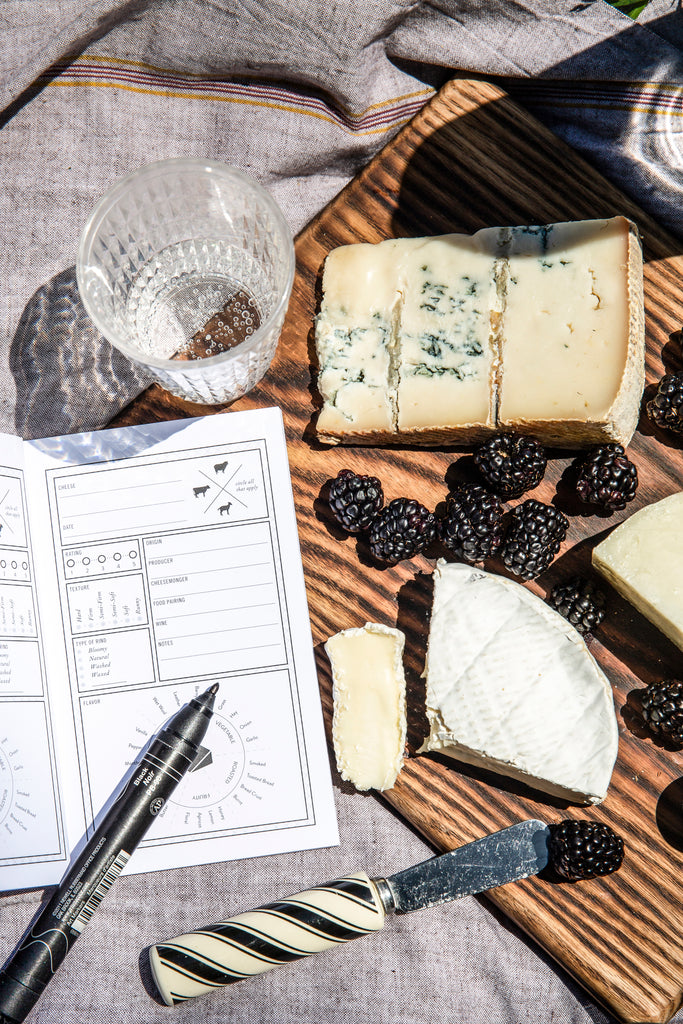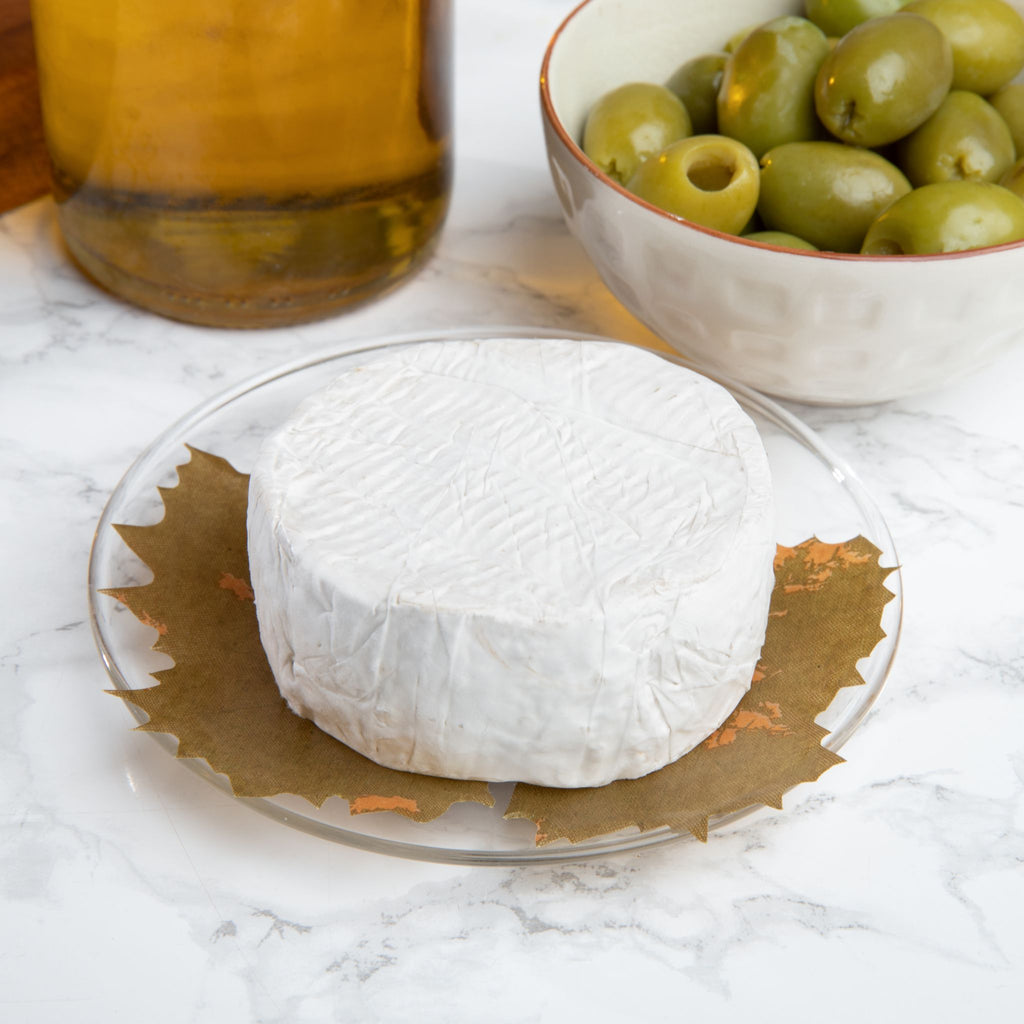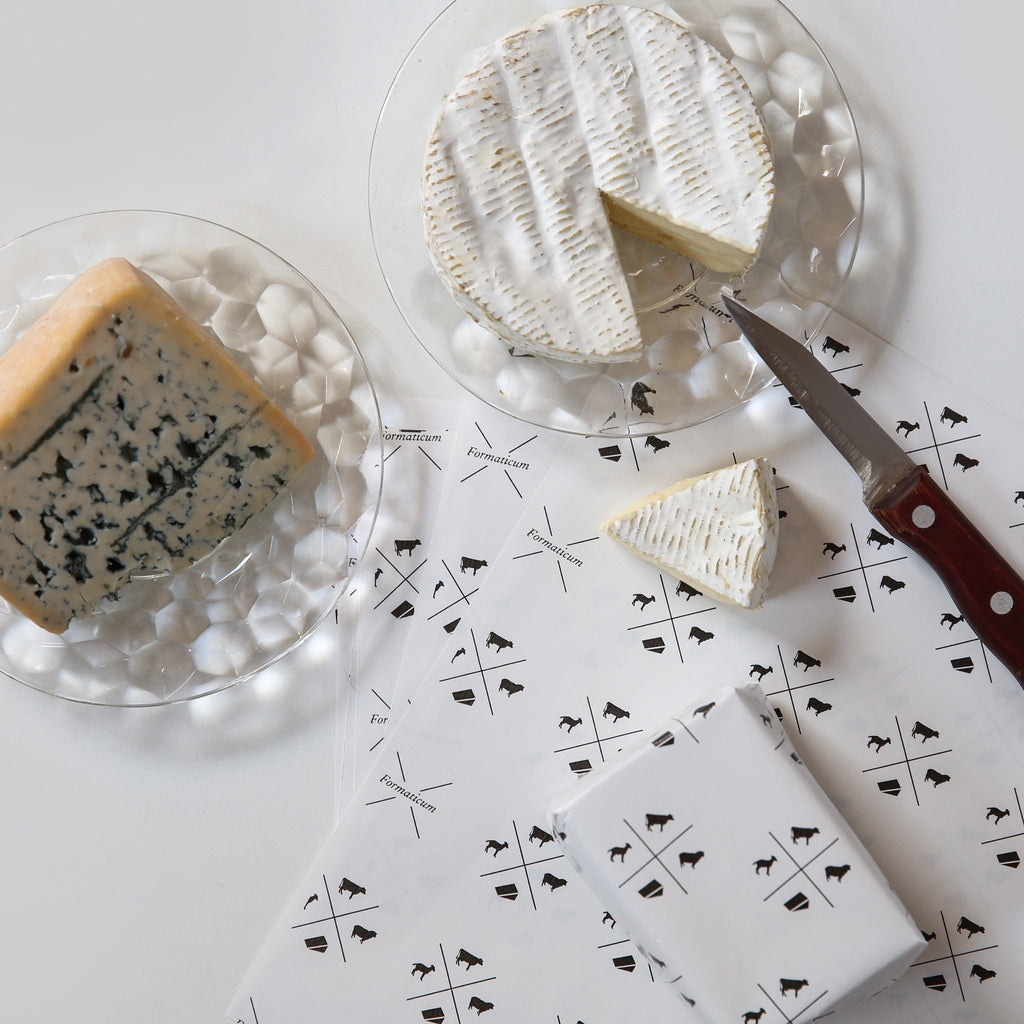Leap Into Something New in 2024!

This year is a Leap Year, meaning there is one extra day in February to eat cheese! If you're stuck in the same routine, week after week, buying the same quarter pound of the same cheese, it's time to Leap into something new for 2024.
Cheesemongers are your tour guide through the cheese case, so don't be afraid to ask for their assistance. They are a wealth of knowledge and are always ready to help you find your next favorite cheese.
To help you get started on your new cheese journey, we've put together a list of some popular cheeses that can help expand your palate and horizons. The list contains some of the more popular cheeses, as well as some suggestions for new things to try that are either similar or the next step to elevate your palate and knowledge.
If you like Humboldt Fog, try an ash-ripened chèvre like Valençay, Selles-sur-Cher, or Blakesville Creamery Linedeline.
If you like Midnight Moon, try Brabander or OG Ghost.
If you like Brie, try Jasper Hill Harbison, Nancy's Camembert, or Moses Sleeper.
If you like Manchego, try Ossau Iraty, Pecorino Sardo, Zamorano, or a traditional raw milk farmhouse Manchego.
If you like Delice de Bourgogne, try Brillat-Savarin, Tulip Tree Trillium, or Nettle Meadow Kunik.
If you like fresh chèvre or goat cheese, try an aged goat cheese like Bucheron, Leonora, or Blakesville Creamery Lake Effect.
If you like block cheddar, try a raw milk block cheddar like Shelburne Farms Cheddar, or even a clothbound cheddar like Montgomery's Cheddar or Cabot Clothbound.
If you like Gruyère, try Uplands Cheese Pleasant Ridge Reserve, Comté, or Beaufort.
If you like Jarlsberg, ask to taste the original Swiss cheese - authentic Emmentaler AOP.
If you like Beemster, try L'Amuse Gouda, Jake's Aged Gouda, or OG Kristal.
If you like Stilton, try Stichelton or Bayley Hazen Blue.
If you like Roquefort, try Fourme d'Ambert or Gorgonzola Piccante.
If you like Piave, try Sapore del Piave, KM 39, or Montasio.
If you like Parmesan, try real Parmigiano Reggiano or Grand Padano.
Once you've selected your cheese and your monger has cut you a piece, it's important to properly care for the cheese once you get it home. Formaticum Reusable Cheese Storage Bags & Sheets are perfect for most styles of cheese and will keep it healthy in your fridge so that the flavor stays as fresh as the day you tasted it in the shop. If you're adventurous, you can ask your cheesemonger to teach you how to wrap like a pro with the Reusable Cheese Storage Sheets, or check out our wrapping tutorials on our website and social media. Reusable Cheese Storage Bags are a quick and easy way to store your cheese without any complicated wrapping techniques involved. Purchase a package on your next cheese shop excursion so that you always have professional cheese storage at your fingertips in the future.
What Is Rennet?

We all know the popular nursery rhyme about Little Miss Moffett eating her curds and whey, but you might not be quite as familiar with rennet. Simply put, rennet is an enzyme that coagulates milk and separates it into the aforementioned curds and whey. But where does it come from, and what does it do for the cheese?
Coagulation is the first step of cheesemaking, separating the solids (curds) from the liquid (whey) so that the solids can be manipulated in different ways, eventually resulting in cheese. Some cheeses are lactic- or acid-coagulated, meaning that the action is caused by lactic acid bacteria present in the milk. But many cheeses, including most hard or aged cheeses, are made with rennet. Rennet-coagulated cheeses use animal (or "traditional"), microbial, or vegetable-based rennet.
Traditional rennet is derived from the 4th stomach, or abomasum, of a young ruminant animal. Vegetable-based rennet can be derived from plant-based sources like thistle, and microbial rennet is grown in a lab using live organisms like mold, yeast, or fungi.
Each version has benefits - while traditional rennet is better for longer-aged cheeses, microbial rennet is suitable for vegetarians, and is also cheaper to produce, which decreases the cost of cheesemaking. Thistle rennet is more common in torta-style cheeses from Spain and Portugal, and lends an herbaceous flavor to the cheese. Some cheesemakers use combinations of different types of rennet to achieve their desired texture and flavor.
If you're interested in tasting some cheese made with different types of rennet, consult your local cheesemonger! They are a wealth of knowledge and can guide you through your options, as well as give you samples to taste. If you're searching for a vegetarian-friendly cheese, we recommend that you try an American cheese! The USA produces the highest number of vegetarian rennet cheeses in the world, second only to Portugal. If you don't have access to a cheesemonger, check the packaging on your precut cheeses - it will likely denote what kind of rennet is used during cheesemaking.
Once you've selected your cheese, don't forget to add a package of Formaticum Cheese Storage Bags to your basket as well, to preserve the flavor of your newest discovery.
Be Moine, Valentine: Give Them Rosettes Instead of Roses
This Valentine's Day, give them what they really want: cheese.
A bouquet of roses is a time-honored Valentine's Day tradition, but what about giving your special someone an 800-year old Swiss cheesemaking tradition? Tête de Moine rosettes are the perfect gift for the cheese lover in your life.
Tête de Moine is a raw milk cheese from Switzerland that was first made by the monks of the Bellelay Abbey in the Jura in the 12th century. Made from whole milk produced by cows who freely graze on fresh Alpine grasses and herbs, the flavor is slightly funky but not overpowering. Each bite boasts floral and brothy notes and flavors of sweet cream, toasted nuts, and stone fruit, along with a dense, fudgy texture. There are less than 10 creameries still producing this historic mountain cheese. As it ages on spruce boards for a minimum of 2.5 months, each wheel is brine-washed periodically to create a savory, slightly sticky rind.
Tête de Moine translates to "monk's head," a reference to the way it is traditionally shaved on a girolle rather than cut with a knife, resembling the top of a monk's head. Curling Tête de Moine into paper-thin rosettes allows the cheese to melt in your mouth, coating your entire palette with flavors of Swiss terroir. It also appropriately pairs well with chocolate!
For best results, we recommend making rosettes on your girolle very soon after you remove the cheese from the fridge, while it is still cold. When you're done curling, remove the remaining piece of cheese from the girolle and place it inside Formaticum Reusable Cheese Storage Bags to keep it fresh and healthy until next time!
Honor the Cheesemakers (& Importers, & Distributors & Mongers…), Save Your Cheese with Formaticum

If you've been to a cheese shop or counter recently, you may have suffered some sticker shock - it's no secret that everything has gotten more expensive lately, but how much do you really know about the cost of real cheese? Good cheese usually isn't cheap, but the sticker shock is also directly connected to consumers' removal from the food system as a result of big box grocery stores and industrialization. In order to reconnect with our cheese, and develop a deeper appreciation for these products, we must first understand just how much work, passion, and knowledge is required to produce a wheel of real cheese and get it into our hands. Good cheese is an investment! Keep reading below to learn what it takes to get cheese from the farmer to your fridge, and how you can protect your investment and maintain your cheese's flavor. The price tag for real cheese represents not only the cheese itself, but the collective skill and labor of everyone involved in the process.
It would take days to describe every detail of how a wheel of cheese gets from the maker to the counter, but what's important to focus on is the number of hands that (literally and metaphorically) touch the cheese on it's journey to the shop. It's also important to remember that higher quality ingredients, equipment, and feed for the animals, for example, are expensive. There is no substitute for human skill and intuition when it comes to making and aging cheese, and employing humans instead of robots is expensive. And no robot can fully understand hundreds of years of cheesemaking tradition and technique.
We rightfully celebrate the farmer and the cheesemaker and the affineur, but we should also consider the people who clean the vats, and mop the floors, and wrap the cheeses, just to name a few. Additionally, the longer the cheese is aged, the fewer wheels of cheese can be produced, meaning each wheel will be more expensive but taste better than a cheese that was aged at an accelerated rate to make room for more cheese in the caves for faster cash. Longer, more deliberate aging also represents a significant cash flow issue for cheesemakers and affineurs, since they do not get paid until the cheese is sold - and this labor of love is often a skill handed down through generations in family businesses! So the price tag does not only represent the cheese itself, but the sometimes hundreds of years of technique and tradition that is present within that wheel.
Once the cheese is ready for sale, it needs to be packed up and moved from the aging facility to its next destination, which might be a port where the cheese will loaded onto a container by hand to be shipped overseas. Aside from the cost of transport to the port and ocean freight, importing cheese has costs associated with customs paperwork and FDA involvement, among other things. The cheese then spends 6 or more weeks in a temperature-controlled shipping container traveling to its next destination, where it will be unloaded by more human beings and cleared by the FDA. Since cheese is a living product, it must be meticulously packed up and maintained during transit so that it will arrive in good condition. It's then picked up by distributors, who need to make a profit off of it, and who will transport that cheese to the stores that will cut and sell it by hand, also for a profit so that employees and bills can be paid and more cheese can be purchased. Not to mention the high skill level and encyclopedic knowledge of the cheesemongers who care for the cheese once it reaches the cheese counter!
This is just the tip of the iceberg and does not even begin to cover the amount of labor and skill that is involved in every step of importing cheese. Understanding at least a small part of the process will help you start to appreciate how much work goes into getting you that quarter pound of aged Gouda or a perfectly ripe Camembert. Getting cheese from the farmer to the consumer is an incredibly nuanced process that requires an incredible amount of skill and knowledge from many different people!
But if waxing poetic about cheesemaking traditions and shipping logistics isn't enough to convince you, the most effective way to create a meaningful and emotional connection with your cheese is to taste it. Every bite contains years of passion, tradition, and experience across different countries and hundreds of people. The best way to honor this work is to uphold the same standard of care that everyone else along the way has shown your cheese - storing and wrapping your cheese in Formaticum Cheese Storage Bags & Paper will ensure that your cheese can breathe, maintains the perfect humidity levels, and most importantly, tastes great. Continuing a high standard of care at home is a great way to show respect for everyone else in the supply chain who worked so hard to get the cheese to you - and experience the flavor of the cheese as the cheesemaker intended!

Welcome to the formaticum Blog
Our home to share our cheese chronicles and more.
Categories
Recent Posts
Women's History Month: March 2025
Beginner's Guide to Cheese Pairings
Upcoming Events
Connect with Us
Join the Newsletter
Sign up to receive special offers, new product releases, updates from the cheese shop, and more.









